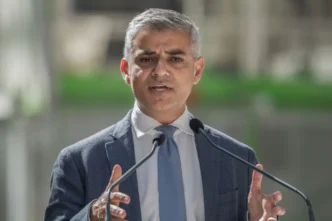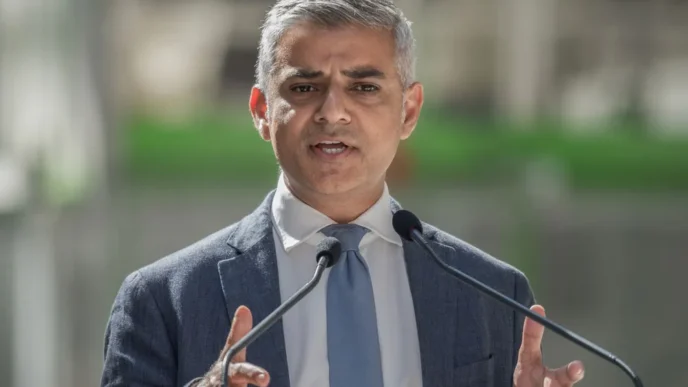In what officials have described as the most extensive and coordinated air assault since the beginning of the full-scale invasion, Russian forces launched a massive overnight missile and drone attack across Ukraine, striking multiple gas storage sites, refineries, and energy infrastructure.
The unprecedented bombardment marks a new escalation in Moscow’s campaign to cripple Ukraine’s energy sector ahead of the winter months — a move that Kyiv says is designed to “freeze civilians into submission.”
The Scale of the Attack
According to Ukraine’s Air Force, over 120 missiles and 80 drones were launched from land, sea, and air, targeting at least six regions, including Poltava, Kharkiv, Lviv, and Kyiv oblasts.
Preliminary reports indicate that energy infrastructure and gas storage facilities sustained heavy damage in Poltava and Dnipropetrovsk, while other strikes disrupted electrical substations and transmission lines feeding the national grid.
Ukraine’s Prime Minister Denys Shmyhal called the barrage “a deliberate act of energy terrorism,” noting that Russia’s latest attack “represents an attempt to undermine both the Ukrainian economy and European energy stability.”
“This was not just another airstrike — it was a calculated blow against Ukraine’s lifeline,” Shmyhal said during a press briefing in Kyiv. “The goal is clear: to break our resilience by attacking what keeps our homes warm and our industries alive.”
Gas Facilities at the Center of the Assault
Ukrenergo, Ukraine’s national energy company, confirmed that two underground gas storage sites — critical to both Ukraine’s domestic heating network and European energy reserves — were hit.
Satellite imagery released by Western intelligence agencies shows widespread fire and smoke damage at key infrastructure points. Officials say that while the facilities are being secured, gas output and storage operations have been temporarily suspended in certain areas to prevent secondary explosions.
Energy analysts warn that the attack could have significant cross-border consequences, as Ukraine plays a vital role in storing and transporting gas for several European Union member states, particularly during the winter peak demand season.
“Ukraine is not just defending its borders — it’s defending Europe’s energy security,” said Hanna Valeriy, an energy policy expert based in Warsaw. “If these facilities remain offline, Europe could see price spikes and supply disruptions in the coming months.”
Civilian and Infrastructure Damage
Beyond energy installations, the missile barrage caused widespread damage to residential areas. In Kharkiv and Dnipro, several apartment buildings and schools were hit by falling debris from intercepted missiles. Ukrainian officials reported at least 37 civilian injuries and five deaths as of early Saturday morning.
Kyiv’s mayor Vitali Klitschko stated that while the capital’s air defenses intercepted most of the incoming projectiles, shockwaves shattered windows and damaged dozens of buildings. He warned residents to prepare for rolling blackouts as emergency teams restore power and heating networks.
Ukraine’s Response
Ukraine’s military command confirmed that 80% of the incoming drones and around 60 missiles were successfully intercepted using Western-supplied Patriot and NASAMS systems, but acknowledged that Russia’s use of hypersonic Kinzhal missiles overwhelmed defense networks in certain regions.
President Volodymyr Zelenskyy, addressing the nation in a late-night video statement, praised air defense forces and vowed that “Russia will answer for every attack on our people and infrastructure.”
“They want to destroy our ability to live — to heat our homes, power our hospitals, and feed our families,” Zelenskyy said. “But we will rebuild faster than they can destroy.”
Ukrainian officials also urged allies to accelerate the delivery of long-range air defense systems, advanced radar units, and additional F-16 fighter jets, expected to arrive in Ukraine later this year.
Western Reaction
The United States, United Kingdom, and European Union swiftly condemned the strikes, calling them a “blatant escalation” and a violation of international law.
In Brussels, EU foreign policy chief Josep Borrell said the attack was “an assault not only on Ukraine’s sovereignty but also on European energy security.” The EU is reportedly discussing emergency sanctions targeting Russian energy exports, logistics firms, and drone suppliers.
Meanwhile, the White House announced that U.S. intelligence and defense officials are working with Ukraine to assess damage and strengthen future energy infrastructure resilience.
“Russia’s deliberate targeting of civilian infrastructure highlights the regime’s desperation,” said U.S. National Security Council spokesperson Adrienne Watson. “These attacks will not break Ukraine’s spirit or Western unity.”
Russia’s Justification
The Kremlin, however, defended the strikes, claiming they were aimed at “military and logistical facilities supporting Ukrainian armed forces.”
Russian Defense Ministry spokesperson Igor Konashenkov described the operation as “a precision strike against energy facilities used for storing fuel for Ukrainian armored units.”
Western analysts reject that narrative, noting that the pattern of attacks mirrors Russia’s winter campaign of 2022–2023, when Moscow sought to cripple Ukraine’s power grid and freeze civilian populations.
The Broader Implications
The renewed focus on Ukraine’s gas infrastructure underscores a strategic shift in Russia’s wartime tactics — one aimed at creating long-term economic destabilization rather than immediate territorial gains.
With winter approaching, the timing of these attacks appears calculated to maximize civilian suffering and test Western resolve in sustaining energy support for Kyiv.
“This is hybrid warfare at its most brutal,” said Michael Andersson, a European security analyst. “Russia is weaponizing winter — targeting Ukraine’s ability to survive the cold, while testing Europe’s ability to stand firm.”
Europe’s Energy Security at Risk
As Europe braces for colder months, the attack has reignited fears of gas shortages and price spikes. Several EU nations still rely on Ukraine’s gas storage facilities to balance winter demand.
The International Energy Agency (IEA) warned that a sustained Russian campaign could “disrupt continental energy flows” and “undermine years of effort to secure alternative supply chains.”
In response, European governments are accelerating emergency energy coordination and considering new sanctionson Russian oil and gas subsidiaries.
Looking Ahead
Ukraine’s energy ministry has mobilized repair teams and reserve capacity to stabilize the power grid, though full restoration could take weeks or months, depending on the severity of infrastructure damage.
President Zelenskyy reiterated that Ukraine would “not be broken,” emphasizing continued investment in renewable and decentralized energy systems to reduce vulnerability to future attacks.
As night falls across Ukraine once more, air raid sirens continue to sound — a chilling reminder that Russia’s campaign against the nation’s energy lifeline is far from over.
Conclusion
The latest assault on Ukraine’s gas infrastructure marks a turning point in the war’s intensity and objectives. What began as a territorial conflict has evolved into an all-out campaign of economic attrition — one that threatens not only Ukraine’s survival but also Europe’s energy stability.
As global leaders scramble to respond, one thing is clear: the battle for Ukraine’s future will not only be fought on the front lines but also in the pipelines, power grids, and energy reserves that sustain a nation under siege.















